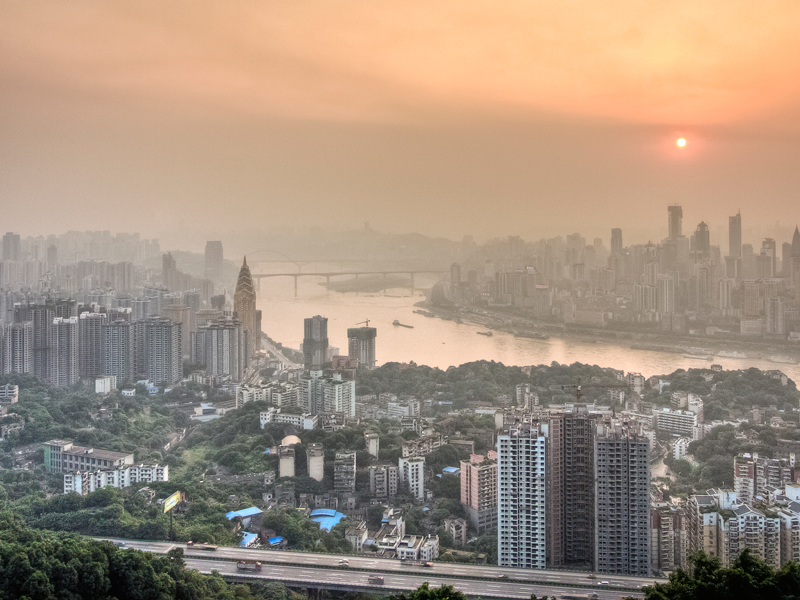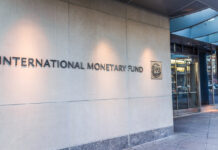By Bao Zonghao
The title of the civilised city, which is awarded every three years since 2005, has been the highest comprehensive accolade for Chinese cities. Hundreds of cities and their residents in 31 municipalities, provinces and autonomous regions have strived for the title. A total of 85 cities were conferred with the title by 2015.
Many cities do not have a clear understanding of the purpose of the campaign to build civilised cities and there have been few studies on its theoretical and practical value in guiding the new-type urbanisation drive and promoting the new model of sustainable urbanisation with Chinese characteristics. The paper approaches these issues theoretically.
Civilised Development and China’s Sustainable Urbanisation
In the coming 10 to 20 years, sustainable urbanisation in China will face eight major challenges. They are also the problems that have to be solved when it comes to establishing value orientations of civilised development in cities and marching towards civilised development.
The Challenge from Resource Constraints
In China, per capita area of land is less than one hectare and most of it is located in mountainous areas and plateaus. Water is another prominent problem. China ranks sixth in total fresh water resources in the world while the per capita possession of water is around one quarter of the world’s average. In fact, it is on the UN list of 13 countries that suffer the severest water shortages. China also suffers wastewater and flood-related problems. Among seven major rivers in the country, the Songhua River is slightly polluted, the Yellow River and the Huaihe River suffer the moderate pollution and the Liaohe River and the Haihe River are heavily polluted. And water quality in seven out of China’s nine major lakes is rated the level V or even level V-minus.
The Challenge from Urban Air Pollution
Canadian scientists drew a new map of China’s air quality in comparison with other parts of the world based on NASA data, concluding that the places that have the highest concentration of PM 2.5 are North Africa as well as North, East and Central China. China’s Ministry of Environmental Protection announced on Aug.4, 2014 that 152 of 161 Chinese cities failed to meet new standards for urban air quality.
The Challenge from Lack of Development Plans
China’s planning overstresses the layout and construction of urban infrastructure while it gives little attention to economic, political, cultural and social studies in cities. The result of such planning is the repeated emergence of landmark buildings, the fact that a lot of cities look similar and pursuit for image projects. Another problem is that China’s planning highlights project construction but belittles development strategies. As a result, even though some cities have worked out some development plans, e.g., cultural development plans, they finally end up choosing places for theaters, art centers and landmark buildings due to shortage of studies of enlightening and educational programs. Such structures, however, are usually removed merely several years later, wasting a lot of time and money. Also, decision-makers tend to attach more importance to ground buildings than to underground infrastructure. As a result, almost all cities’ roads or lanes would be flooded in case of rainstorms.
The Challenge from the Absence of Public Space
Public space is absent in China’s fast urbanisation drive over the past several years. First, farmers lose their land, and become unemployed and homeless during the urbanisation drive. Second, as cities expand, they are divided into different areas based on social strata. The areas are now increasingly separated from each other. Third, there is a growing gap between rich and poor. In 2010, the Gini coefficient was 0.55 in China as against 0.45 in the US. China’s income gap in 2010 was almost twice as wide as in 1980.

The Challenge from Urban Traffic Congestion
Traffic congestion, together with resource shortage and environmental pollution, is among a series of problems in China’s fast urbanisation drive. Traffic jams are the most common phenomenon in large cities like Beijing. The primary reason is urban planners did not anticipate so many prospective things when they made the blueprint. The imbalanced industrial layout has led traffic jams to be a potential problem. When such a problem becomes a reality, improving former development plans cannot yield great results.
The Challenge from Urban Population Growth
As a result of its urbanisation drive, China’s urban population is growing fast. Beijing’s permanent population had been estimated to reach 18 million by 2015 but the reality is it was about 18.5 million in 2009. The permanent population in Shanghai reached 18.58 million in 2008 and exceeded 20 million in 2010. Urban population in Guangzhou rose from 6.01 million in 2005 to 12.9 million in 2010.
The fast growing population has brought about urban traffic jams, poor living conditions, unemployment, a widening gap between rich and poor. In addition, the rising population and the area of arable land will make food shortage a major problem in 2030.
The Challenge from Capitalisation-Driven Cities
Land-based urbanisation has become a source of revenue for governments at all levels since 2000. In addition to income from land lease, some governments have taxes from construction and real estate industries at their disposal. Due to land capitalisation, governments at almost all levels have become increasingly adept at promoting urbanisation through the mode of “expropriating land – leasing it out – collecting taxes – getting collateral loans – a new round of land expropriation”.
In 2013, the figure stood at 35 percent. In 2014, land lease nationwide generated 4 trillion yuan. It is expected to generate 3.9452 trillion yuan in 2015, down 4.7 percent from the previous year. However, the mode of overdrawing land resources is not benefiting the people. On the contrary, more than 80 percent of people feel increasing pressure and less satisfied because they cannot afford housing.
Excessive land capitalisation is greedily using all natural resources available, turning them into wastes that are detrimental to the environment. In fact, more and more greenhouse effects, water shortage and urban waste crises as well as weaker and weaker ecological chains are overstretching the environment for human beings.
The Challenge from the Urban-Rural Dual Structure
Now urbanisation and modernisation has become universal pursuit, will China, now part of the globalisation process, slow down its urbanisation? And how shall it realise a well-off society in an all-round way by solving dual structural problems through sustainable urbanisation as well as urban modernisation?
If China intends to solve the rural-urban dual structure in the 13th Five-Year Plan period, it should mainly solve the problem of people’s urbanisation lagging behind land urbanisation, meaning that China should make a point of turning 300 million to 400 million rural migrants into urban residents. Local authorities in 14 provinces and municipalities have annulled the so-called rural household registration system but rural migrants have seen no improvements in their lives. In fact, there is now a new rural-urban dual structure in cities. Efforts should be made to ensure that rural migrants have the same access as urban residents to employment, basic pension, public education and housing during the 13th Five-Year Plan period.
Civilised Cities: A Historical Choice of the Model of Sustainable Urbanisation
Civilised cities are a new solution to the abovementioned eight challenges, a new model to realise sustainable urbanisation and a choice made by history as the paradigm of cities evolves.
Choices of Models of Cities and the Model of Sustainable Urbanisation
I would like to use the “paradigm” to describe cities and use such words as paradigms of cities or models of cities to refer to different features like value orientations, forms as well as functions that cities show under the influence of people’s different ideas and outlooks on the world in different periods of time.
If a model cannot solve problems in the city, then there will emerge urban revolution and result in the change of the model. Such change is a natural process and meanwhile a choice made by urban residents in a specific period of time. China’s current sustainable modernisation drive is in the period that choices must be made.
Qiu Baoxing, vice minister of Housing and Urban-rural Development of China, said China’s urbanisation should adopt model C, outperform model A in developed countries like the US and prevent getting trapped in model B like cities in South America and Latin America.
Model A is adopted in such developed countries as the US. It features low-density urban sprawl, private cars, chemical fuels as well as disposable consumables. The model has brought about the result that the US, with its population accounting for one fifth of the world’s total, consumes more than one third of the world’s energy. Model A is undoubtedly a major culprit of worldwide high oil prices, high emissions and high food prices.
Because of model A’s results, some scholars from western countries proposed the anti-growth model B, like Serge Latouche’s de-growth theory. According to the theory, economic growth is causing mounting pressure on the biosphere and is thus not sustainable. Bio-crises, especially deteriorating greenhouse effects, have made de-growth essential and worthwhile to scale down the economy. Therefore, it is necessary to replace our current economically growing society with one where it does not grow.
Based on his analysis of the two models, Qiu Baoxing proposed a model C. The new urbanisation model emphasises growth but it can make most of the efficient market mechanism and compensate for negative effects at a low cost. Model C is sure to trigger a profound revolution in economic, political and social fields.
Model C is valuable and inspiring. However, it has some defects as the model of China’s urbanisation in the 21st century. First, it did not define what the model is. Second, it did not give a logical analysis of model C. In other words, it neither revealed the features of China’s model of urbanisation at different stages of development nor offered an analysis of the urbanisation’s present status and its future development trends. Third, it did not offer enough value-based analysis of China’s model of urbanisation. When an urbanisation drive reaches the level of the model, it will surely have some universal significance.
Civilised Cities are a Historical Logic of the New Model of China’s Sustainable Urbanisation
A civilised city is a historical logic of the new model of China’s urbanisation and also a choice made by history as cities evolve in China and even worldwide. A summary of the four paradigms (models) of cities shows that becoming a civilised city is the historical logic and necessity of the new model of China’s sustainable urbanisation drive.
Cities in the business model. Cities in ancient and modern China were mainly business centers as well as those engaging in overseas trade. And most of the cities built on the success of the handicraft industry emerged after the Ming Dynasty. In the west, cities’ rise and development were also closely related with business, handicraft and trade.
The business model of both ancient and modern cities is in essence compatible with plain materialism. Respect for the material world, the fact that citizens cannot live or develop without materials, and their hedonism in fact helped boost the development of business-based cities.

Cities in the industrial model. The industrialisation drive in the 18th to the 19th century gave the most powerful bolster to cities, especially large ones, in the western world. It surely brought about urban civilisation yet such unwanted things as pollution, poverty, crime, crowd and ecological problems. Such problems, the earliest urban problems, were the result of humans’ reckless use of natural resources. Cartesianism and Newton’s mechanism also contributed to the situation.
Cities in the eco-friendly model. Modern physics shows the world is integral and ecological and it can be considered as a systematic theory in the broad sense. Bio-crises awaken humans and propel them to reflect on the problems of the industrial society, the defects of cities in the industrial model as well as the relations between man and nature. Humans start to fall in love with eco-friendly cities. More than 100 Chinese cities have proposed to turn themselves into eco-friendly cities. Unfortunately, most of them did not give enough attention to social ecology although they highlight bio-ecology and nature.
Cities in the civilised model. At the turn of the 21st century, scholars worldwide proposed to view eco-friendly cities from new perspectives and predicted that new models would emerge. Civilised cities, as an embodiment of social civilisation and harmony which have involved efforts of millions of Chinese, are fundamentally a state of harmony and civilisation. Civilised cities refer to a new paradigm, i.e., the model of civilised cities, which fits with the trends of cities’ development in the 21st century and embodies the concept of scientific development.
Civilised Cities: A New Model Towards Sustainable Urbanisation
The campaign to build civilised cities, which is attracting millions of Chinese people, can be seen as their collective reflection on uncivilised and inharmonious way of urban development. The campaign to build civilised cities is a model with Chinese characteristics that offers a road to realise sustainable modernisation in China.
Naming the Model of “Civilised Cities”
Considering its features, I would like to name it model W as W is the initial letter of the word wenming (meaning civilisation) in the Chinese language. Doing so has many advantages: (i) It absorbs good things from model A that is widely applied in developed countries like the US and discards what is bad, so W can be seen as two inverted As; (ii) Model W is the first model in which urbanisation interacts with urban-rural integration; (iii) The model improves itself as it develops. Model W implies that cities are systems themselves but also requires us to study and reveal their evolution in a systematic way.
Model W is a Complicated Mega-System
(1) A civilised city has three fundamental features: civilised forms, civilised functions and civilised quality. The first one is about the image of a civilised city while the last two are about its intrinsic features. Different yet related, they together demonstrate what a civilised city mean: an organic unification of civilised forms, functions and quality.
(2) About the Evaluation System. The Evaluation System is designed to give a complete and comprehensive evaluation of urban civilisation as well as the effort to build a civilised city and achievements in the process.
The simplified model is also open. It can be tested by computers and revised and improved as new progress is made in the campaign to build civilised cities so as to further promote the program.
(3) Functions of the system. Why do I say that the system is a comprehensive model that has a systematic structure? It is because the model W has the following three functions.
First, it is the first whole set of system that has been found. It has been proven to be a feasible quantitative method in the first (2005), second (2008), third (2011) and fourth (2014) national campaigns to build civilised cities to describe and evaluate the achievements. The successful application of the quantitative method in the Evaluation System, which was pioneering in the campaigns to build civilised cities, was used for the first time in studies of social sciences to study the complicated mega-system, which has great theoretical value in promoting quantitative studies in the field of social sciences.
Second, model W, as a model to evaluate civilised cities, is designed to show different concepts extracted from civilised cities with different indicators so as to demonstrate the achievements made in the process in an objective and comprehensive way. The model ignores many concrete procedures and relevant details but focuses on express relations and stages involved in the campaign in an essential, systematic and comprehensive way. It has also been revised and improved in accordance with requirements about the practical work in the campaign. The model now has four versions (2005, 2008, 2011 and 2014).
Third, model W is an institutional design and a set of institutional standards about the campaign to build civilised cities in which the government organizes citizens to participate. A civilised city and its harmonious development needs institutional guarantee. But the question is how to design or standardise the institution and how to bring into play the role of the institution in guaranteeing a city’s civilised and harmonious development. From preparing the Evaluation System to applying the system to evaluate civilised cities from 2005 to 2014, I have learnt that the model is a successful institutional design of a city’s civilised and harmonious development.
Why say so? That is because as many as 40 ministries and departments in China have been included in the system, including the Central Commission for Cultural and Ethical Progress, the Central Committee for Comprehensive Management of Public Security, the Central Commission for Discipline Inspection, the Ministry of Public Security, the Ministry of Housing and Urban-Rural Development, the Ministry of Education, the Ministry of Culture and the Ministry of Civil Affairs, etc. It serves as a bridge between central government departments and subordinate regional ones, the institutional design integrates their resources to promote sustainable urbanisation.
Model W is a New Model that Leads Cities to Realise Sustainable Urbanisation in a Comprehensive and Systematic Way
To better tackle challenges confronting sustainable urbanisation, the Evaluation System highlights its role in helping cities transform their way of development as well as directing cities to show concern for “public spirit”, “public space”, “public demands”, “public services”, “public administration” and “public security” to improve the quality of sustainable urbanisation and promote social harmony. Thus, the campaign to build civilised cities helps make cities more livable and facilitates developing an institution for social governance with Chinese characteristics.
Bao Zonghao is professor of philosophy at the School of Humanities, East China University of Science and Technology; president of Shanghai Academy of Huaxia Social Development Research; distinguished research fellow at Urban Culture E-institute of Shanghai Higher Education.




































































